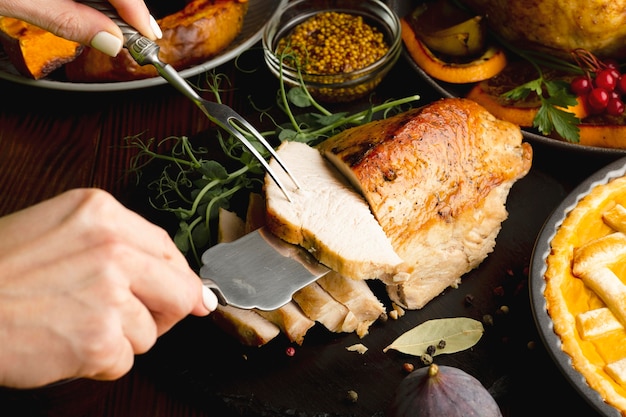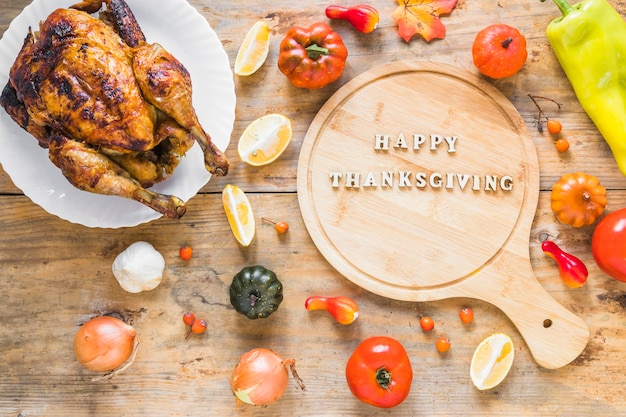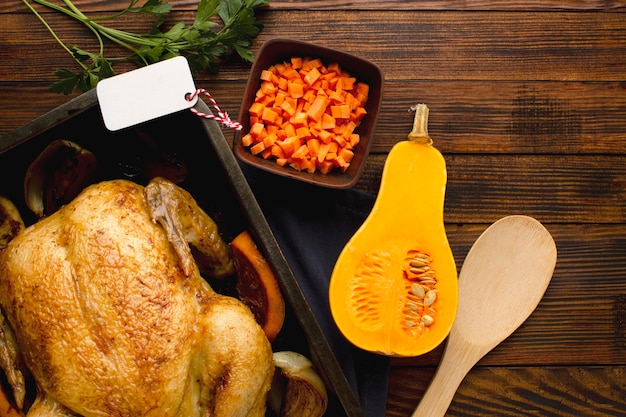Ah, the Christmas turkey. It's the star of the show, a symbol of festive cheer and, let's be honest, the source of much stress for the cook. Trying to navigate the world of turkey cooking times can feel like a culinary minefield. You want a perfectly cooked bird, juicy and flavorful, but you also want to avoid that dreaded undercooked scenario. No one wants a Christmas dinner that ends in a food safety panic. So, fear not, fellow cooks! I'm here to guide you through the intricacies of turkey cooking times, drawing on years of experience, a few delightful mishaps, and a deep love for a good roast dinner.
(Part 1) The Basics of turkey cooking times

Let’s get down to brass tacks. The key to a delicious and safe turkey lies in achieving the right internal temperature. It's all about ensuring that the bird is cooked through, but not dried out. And the best way to guarantee that perfect balance? Understanding how long your turkey needs to spend in the oven.
The Golden Rule: 15 Minutes Per Pound
For a turkey roasted at 325°F (163°C), the traditional rule of thumb is 15 minutes per pound. Now, you might be thinking, “Hold on, that’s a lot of time!” But trust me, it's essential to ensure that your turkey is cooked through and succulent. That’s the difference between a delicious feast and a dry, disappointing bird.
Understanding The Factors That Affect Cooking Time
But remember, the 15 minutes per pound rule is just a starting point. The actual cooking time can vary depending on a few crucial factors.
- The size of your turkey: A smaller turkey will cook faster than a larger one. It's like trying to heat a single slice of bread versus a whole loaf – it simply takes less time.
- Stuffing: If you're stuffing your turkey, it'll take longer to cook. The stuffing traps heat inside the bird, making it cook more slowly. It's like wrapping your turkey in a cozy blanket.
- The oven's temperature: A lower oven temperature means a slower cook, while a higher temperature speeds things up. If you're using a different temperature, you'll need to adjust the cooking time accordingly.
- The type of oven: Just like every oven has its own quirks and personalities, they can also run hotter or cooler than others. If you're unsure about your oven's temperament, using a meat thermometer is always a good idea.
How To Calculate Cooking Time For Your Turkey
Let's get practical. Here's a simple breakdown of how to calculate the perfect cooking time for your turkey:
- Weigh your turkey: First things first, grab your trusty kitchen scale and weigh your turkey. This will give you an accurate starting point for your calculations.
- Use the 15 minutes per pound rule: Multiply the weight of your turkey by 15 minutes. This will give you a basic estimate of your cooking time.
- Adjust for stuffing and oven temperature: Add an extra 30 minutes if you're stuffing your turkey. You’ll need to adjust the cooking time further if you're using a different oven temperature. Check online resources to find precise adjustments for your oven.
- Factor in resting time: After cooking, let the turkey rest for at least 30 minutes before carving. This allows the juices to redistribute throughout the bird, ensuring a more succulent and flavorful outcome.
(Part 2) Detailed Turkey Cooking Time Guide

Now that we've covered the basics, let's delve deeper into the nitty-gritty of turkey cooking times, taking into account different sizes and whether you're stuffing the bird. To make this even easier, I've included a handy table.
Turkey Cooking Time: Unstuffed
Here's a breakdown of cooking times for unstuffed turkeys, based on their weight. Remember, these are just estimates, and you should always use a meat thermometer to check the internal temperature of your turkey.
| turkey weight (lbs) | Cooking Time (Minutes) |
|---|---|
| 8-12 | 120-180 |
| 12-16 | 180-240 |
| 16-20 | 240-300 |
| 20-24 | 300-360 |
Turkey Cooking Time: Stuffed
Ah, the age-old question: to stuff or not to stuff. If you're opting for a stuffed turkey, you'll need to add extra time to the cooking process. Remember, the stuffing needs to reach 165°F (74°C) internally as well, so you've got two temperatures to keep an eye on.
| Turkey Weight (lbs) | Extra Time (Minutes) |
|---|---|
| 8-12 | 45-60 |
| 12-16 | 60-75 |
| 16-20 | 75-90 |
| 20-24 | 90-105 |
(Part 3) The Importance of Checking The Internal Temperature

Everyone says it, but it bears repeating: checking the internal temperature of your turkey is not just a culinary suggestion, it's a safety requirement. It's how you ensure your turkey is cooked through and safe to eat. I've been a turkey-cooking rebel in my time, thinking I could judge doneness by appearance. Let's just say, it hasn't always been pretty, and I've definitely had some close calls. Learn from my mistakes and use a meat thermometer!
Where To Insert The Thermometer
The most reliable spot to check the turkey’s internal temperature is in the thickest part of the thigh, making sure to avoid hitting the bone. This will give you the most accurate reading.
What Is The safe internal temperature?
The turkey is safe to eat when the internal temperature reaches 165°F (74°C). You’re looking for the temperature to be consistent across the thickest part of the thigh and the breast. Don't just focus on the safety aspect, though. You also want a perfectly cooked turkey, succulent and flavorful.
(Part 4) Turkey cooking tips
We've got the cooking times and safety measures sorted. Now, let's dive into some handy tips to help you cook the most delicious turkey.
Brining Your Turkey
Brining is a game-changer. It involves soaking the turkey in a salty solution, which helps to retain moisture and enhance flavour. You'll find all sorts of brine recipes online, but I prefer a simple mix of salt, sugar, and water. Leave the turkey in the brine for at least 8 hours, or even overnight for maximum flavour.
roasting techniques: The Best Ways To Cook Your Turkey
Roasting techniques are like different personalities. They all aim for the same goal, but they achieve it in unique ways.
- High Heat Roast: For that crispy skin, you can start by roasting your turkey at a high temperature (450°F/232°C) for 30 minutes, then reduce the temperature to 325°F (163°C) for the rest of the cooking time. This method creates a lovely crust on the outside while allowing the inside to cook evenly.
- Low And Slow: If you prefer a more even cooking process, roast your turkey at a lower temperature (325°F/163°C) for the entire cooking time. This is a great option for larger turkeys.
- reverse sear: This method involves cooking the turkey at a low temperature for a longer period, then finishing it at a higher temperature to crisp up the skin. It's a bit more time-consuming but can result in an incredibly juicy and flavorful bird. Think of it as a slow, deliberate approach to achieving perfection.
How To Achieve Crispy turkey skin
We've all got our turkey dreams, and for many, it's that beautiful golden-brown, crispy skin. Here’s how to make it happen:
- Pat the skin dry: Before roasting, pat the turkey skin dry with paper towels. This helps to create a crisp texture. Think of it as preparing the skin for a golden-brown tan.
- Use butter or oil: Brush the turkey skin with melted butter or oil to enhance browning. It's like giving the skin a little bit of extra TLC.
- Elevate the turkey: Use a roasting rack to elevate the turkey so that air circulates around it, ensuring even browning and crispier skin. This allows the heat to reach every nook and cranny of the bird.
- Avoid basting: Basting can actually make the skin soggy. Focus on roasting your turkey high and dry to achieve that golden-brown color and crispy texture.
(Part 5) Handling And Storing Your Cooked Turkey
Alright, you've got your perfectly roasted turkey. Now, it's time to talk about handling it properly. This is crucial to prevent foodborne illness. We want to enjoy our turkey feast, not spend it fighting off a nasty bug.
Safe Handling of Cooked Turkey
First things first, make sure your turkey is cooked to a safe internal temperature of 165°F (74°C) as we discussed earlier. Once it’s cooked, let it rest for at least 30 minutes before carving. This allows the juices to redistribute throughout the bird, resulting in a more succulent and flavorful meal.
Storing Leftover Turkey
Leftover turkey is like a culinary gift that keeps on giving. But proper storage is key. Here’s how to do it right:
- Refrigerate within 2 hours: Store leftover turkey in the fridge within two hours of cooking. It's like giving the turkey a quick cool-down session.
- Use shallow containers: Place the turkey in shallow containers to help it cool down quickly. This prevents any unwanted bacterial growth.
- Consume within 3-4 days: Leftover turkey should be consumed within 3-4 days in the refrigerator. After that, it's best to say goodbye.
Freezing Leftover Turkey
If you want to freeze leftover turkey, you can do it safely for up to 2 months. Wrap it tightly in freezer-safe plastic wrap or aluminum foil, then place it in a freezer bag. This will help to preserve its freshness and flavor.
(Part 6) What To Do With Leftover Turkey
Leftover turkey can be a culinary blessing. It's an opportunity to get creative and whip up some delicious dishes.
turkey sandwiches
Ah, the classic. There's something comforting about a good turkey sandwich. Use leftover turkey in sandwiches with cranberry sauce, stuffing, and mayonnaise.
turkey soup
Soup is a wonderful way to use up leftover turkey. Add it to chicken noodle soup, turkey vegetable soup, or even a creamy turkey soup with rice.
turkey salad
Turkey salad is a light and refreshing way to enjoy leftover turkey. Combine it with mayonnaise, celery, onion, and cranberries for a delicious salad.
Turkey Shepherd's Pie
If you're feeling a bit more adventurous, try making a turkey shepherd's pie. Layer leftover turkey, mashed potatoes, and gravy for a hearty and comforting meal.
turkey pot pie
Similar to the shepherd's pie, you can make a turkey pot pie with a flaky crust and a filling of leftover turkey, vegetables, and gravy.
(Part 7) A Little Slice of My Turkey Cooking Journey
Speaking of turkey, I can’t help but share a little anecdote about a particularly memorable turkey cooking experience. It was back in 2018. We had a big family gathering, and I was in charge of the turkey. I followed all the rules, the 15 minutes per pound, the meat thermometer, the whole shebang. But I got a bit carried away with the stuffing. I packed it in so tight that the turkey was practically bursting at the seams.
Well, needless to say, it took ages to cook, and I was a nervous wreck. I kept checking the internal temperature, but it just wouldn't reach the magic 165°F. I was starting to think I'd ruined Christmas dinner. But in the end, everything turned out alright. It was a bit of a close call, but the turkey was cooked through, and everyone enjoyed the feast. It taught me a valuable lesson though: never underestimate the power of stuffing. It's a delightful addition to your turkey, but it needs to be handled with care.
(Part 8) FAQs
Finally, let's address some common questions about turkey cooking. I've got you covered.
1. Can I Cook My Turkey In The slow cooker?
Yes, you can! You'll need a large slow cooker, and it will take longer to cook than in the oven. The good news is, slow cooking results in a very moist and tender turkey.
2. How Long Can I Leave My Turkey Out At Room Temperature?
Not long, my friend. It's best to keep cooked turkey refrigerated within two hours to prevent bacterial growth. Keep it safe, keep it chilled!
3. Can I Cook A Turkey Without Brining It?
Absolutely! While brining can enhance the flavor and moisture of the turkey, it's not a necessity. If you choose not to brine, make sure to use other methods to retain moisture, such as rubbing the turkey with butter or oil before roasting.
4. What If My Turkey Is Undercooked?
If your turkey is undercooked, you’ll need to cook it longer to ensure it reaches the safe internal temperature of 165°F (74°C). Use a meat thermometer to check the temperature regularly.
5. What If My Turkey Is Overcooked?
If your turkey is overcooked, it will likely be dry. There’s not much you can do to fix this. However, you can try serving it with a flavorful gravy or sauce to help compensate for the dryness.
I hope this guide has helped you to confidently tackle your next turkey feast. Happy cooking!
Everyone is watching

Perfect Rice Every Time: The Ultimate Guide to Cooking Rice
Cooking TipsAs a self-proclaimed foodie, I've always been a bit obsessed with rice. It's the foundation of countless cuisi...

Prime Rib Roast Cooking Time Chart: Per Pound Guide
Cooking TipsPrime rib roast. Just the name conjures images of lavish dinners, crackling fires, and hearty laughter. It’s ...

The Ultimate Guide to Cooking Asparagus: Tips, Techniques, and Recipes
Cooking TipsAsparagus. The mere mention of this spring delicacy conjures up images of vibrant green spears, crisp and burs...

Ultimate Guide to Cooking the Perfect Thanksgiving Turkey
Cooking TipsThanksgiving. Just the word conjures up images of overflowing tables laden with delicious food, the scent of r...

How Long to Bake Potatoes in the Oven (Perfect Every Time)
Cooking TipsBaked potatoes are a staple in my kitchen. They're incredibly versatile, delicious, and surprisingly easy to m...
